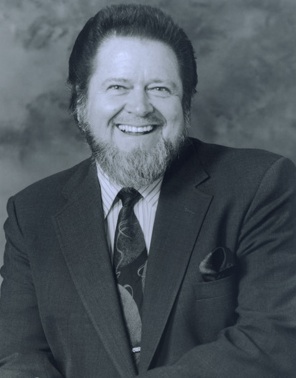“I have always been more inclined to believe the ruck of hard-working people than to believe that special and troublesome literary class to which I belong. I prefer even the fancies and prejudices of the people who see life from the inside to the clearest demonstrations of people who see life from the outside.” – GK Chesterton
Just what make a hit song? I could fill the pages of a very large book with people’s answers to that question. What goes into making a hit is a little more complicated than any of us can articulate.
One of my favorite song writers is Dallas Frazier who is my close friend and neighbor here in Nashville. He is simple man with a profound gift for writing hit songs. He has written well over 100 #1 one billboard hits in his career, songs like “There goes my reason for living,” made popular by Evis Presley; “Elvira,” made popular by the Oakridge Boys; “Alley-Oop,” made popular by Gary S. Paxton; or name any George Jones hit, Dallas either wrote it or co-wrote it.
He is now 75 years old and I always enjoy talking to him about the good ol’ days when Jerry Wexler ran Atlantic Records and Bob Dylan hit the scene with his revolutionary music and song writing. He said he wrote songs for the “common man, songs that touched the heart strings or songs that everyday people could relate to.”
At a recent Berkeley Connect in Music small-group discussion, graduate mentor Jamie Apgar asked students what they thought were characteristics of a hit song.
“A hit song is easy to connect with and relatable,” offered one student. Another spoke about the importance of the song being catchy, in both its beat and lyrics. Repetitiveness is also key to a song’s hit potential. Apgar agreed, saying, “It has a visceral effect, and it gets into our bodies and makes us want to move.”
Students also discussed how pop songs tend to have a very specific structure – the basic verse/chorus/bridge format. Almost all hit songs adhere to this structure, because it makes them easier to memorize.
“What’s the goal of the hit song?” Apgar asked the class. Some students thought a lot of pop songs were built to showcase the voice of the singer. This led to a discussion of the gender politics of female versus male singers: some thought that there were higher expectations in the music industry that women be good singers. “I feel like women are expected to be good singers, and men are expected to be good musicians,” posited one student.
On that note of strong female vocalists, the group took a moment to listen to Adele’s show-stopping hit “Hello.” Perhaps unsurprisingly, students found a lot of the criteria for hit songs they had brainstormed were featured in this song.
“I feel like all the criteria don’t even need to be satisfied because her vocal ability is so dominant,” proclaimed one student. While this may be true, the song does feature repetition, catchiness, and an iconic hook – that is, “that little snippet that makes you stop and listen,” Apgar explained.
Subsequently, the class was able to create a makeshift definition of a hit song – a song with commercial success that you hear everywhere, from the radio to blasting out of your neighbor’s bedroom window. However, commercial success doesn’t necessarily translate to good music. “Pop songs are fairly pleasant musically, but how musically complete they are is up to your opinion,” argued one student. Other students agreed – a lot of the success of hit songs is attributed to hype and slick production.
Hit songs are also targeted towards a very general audience. This is the reality of the music industry – that hit songs must be characterized by marketability. While this can be upsetting to some music lovers, others realize it’s just a fact of life. “If you don’t buy into the economic side of music, you won’t sell anything,” explained one student.
Despite the ubiquity and produced-for-mass-appeal feel of hit songs, students weren’t denying their love for hit songs. And even if one hates a hit song, there’s still a great joy to be found in sharing its terribleness with others. After all, said one student, “Pop music is a community-building experience.” Proving this point, everyone in the group had an opinion to share about hit songs, no matter what kind of music they usually listen to, play, or create themselves. – Posted by Madeline Wells, Berkeley Connect Communications Assistant.
Coming from the rock world that put so much emphasis on the driving beat and power of the “rock vehicle,” my real inspiration, interestingly, was always from well-written songs that usually came from the country music scene, oftentimes, made popular by a totally different genre of artists. A classic example is “Mid night train to Georgia,” that Gladys Knight made popular, it was originally a country song, “Midnight plane to Houston,” before the R&B producers put their spin on it for Gladys, changing the name.
I rarely miss a Garth Brook’s show, because as an entertainer I think he can relate to the common man. It sure doesn’t hurt that he can pick good songs either from great writers.

